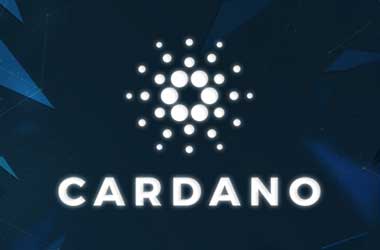
As of today, Cardano has had a major hard fork, and Alonzo is gone live on the mainnet.
This implies that the network backs smart contracts, allowing different teams and pventures to begin developing and implementing protocols straightforwardly on Cardano.
Plutus is an essential concept to remember while discussing smart contracts on Cardano. This feature is enabled by the architecture.
The variables of the expanded UTXO model are defined using the Plutus module. As per the researchers, it has distinct benefits over other accounting methods.
The update adds smart contract features and allows developers to build a slew of fresh ventures and apps on the network, including decentralized finance (DeFi) platforms, non-fungible tokens (NFTs), and stablecoins.
Furthermore, the Plutus Application Framework (PAF) offers access to network-based applications and facilities, and it should support complete web browser compatibility.
1/2 Upgrade successful.
Moments ago, we deployed the #Alonzo upgrade at the epoch rollover.
Welcome to the start of a new era for #Cardano $ADA pic.twitter.com/r6QNvTv4pt
— Input Output (@InputOutputHK) September 12, 2021
There were several difficulties in the deployment. A major scalability problem inside the basic architecture of Cardano’s smart contract capabilities was lately brought to light. This essentially implies that many users engage with the same channel at the same period.
Nevertheless, Charles Hoskinson and Input Output (the team behind Cardano) went into detail to describe the network’s whole smart contract architecture and how this is not a problem. Furthermore, Input Output released a fresh new blog a few days ago that outlines Cardano’s EUTXO method to smart contract processing and how well it provides better safety, no fees for failed dealings and complete cost consistency.
In any event, today’s hard fork ushers in a new period for the Cardano venture, and it will be fascinating to watch how it affects its environment in the future. As previously stated, On September 2nd, Input Output — the research and development firm underpinning Cardano – announced that the Alonzo testnet had been effectively upgraded to incorporate Plutus smart contract features.
Plutus is the architecture that would allow Cardano smart contracts. Plutus Core will be used to find the values of EUTXO transactions — an enhanced UTXO model with distinct benefits over existing accounting models. It would also execute the code written for smart contracts.
A Plutus Application Framework (PAF) will also make it simple to access network-based apps and services. It should also feature complete compatibility with web browsers. Plutus should also improve on existing token capabilities. “Applications built on top of the PAF automatically offer an HTTP and WebSocket interface that may be used to communicate with the app from the browser window.”
This should enhance minting rules, making them more advantageous for NFTs that require time straps. It is a component of the Alonzo update, which is presently in the testnet phase. If the team meets their targets, we could see a mainnet switch in ten days.
Cardano inventor Charles Hoskinson thinks the network’s lengthy journey to the smart contract period would benefit the whole cryptocurrency industry. “We worked extremely hard for a long period.A portion of the team members have been working for more than four years. We completed our tasks. [We] completed our assignment. We gave hundreds of talks and wrote dozens of articles. So much code was created, and so much thinking went into developing a really new model that is universally helpful, if anything, as an experiment for the industry [that] we believe is the greatest industrial model.”
With smart contract functionality now available on Cardano’s mainnet, Hoskinson is thinking ahead to what’s subsequently required for the ecosystem, including the release of the Plutus application backend, which includes a comprehensive set of modules that will enable both technical and non-technical people to create on the ecosystem.
“So that was the day, and do you know what happened? Monday, September 13th, there has to be a morning after. We come to. It’s back to business as usual. A lot of things are going to happen. [The] network will most likely be under a lot more strain as people experiment and test things, which is great. The newest and best version of the Plutus application backend will be published a few weeks later, and the [Cardano 2021] summit will take place. There will also be a strong focus on the ecology as a whole. That will be a fantastic event.”